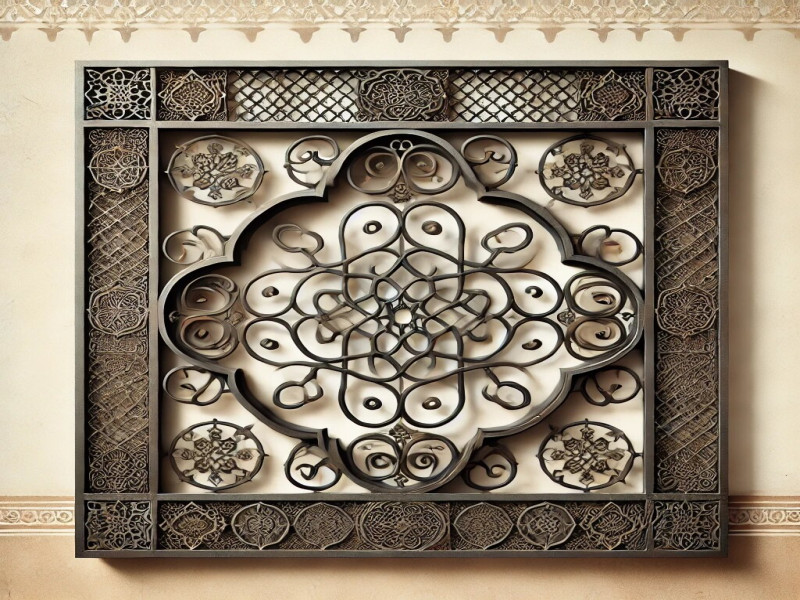Wrought iron in Morocco, much more than a simple craft, tells a story. A story of men and fire, of shapes and lines, of tradition and transmission. From the heart of the medinas to contemporary homes, this ancestral art has spanned the centuries, sublimating Moroccan architecture and remaining a silent witness to its evolution.
The origins of know-how
Wrought ironwork in Morocco has its roots in antiquity. Introduced by the Phoenicians and enriched by Berber, Arab and Andalusian influences, it has slowly carved out a place for itself in the history of Moroccan craftsmanship.
From the 12th century, under the Almohad dynasty, wrought iron became omnipresent in constructions. Grilles, gates, and balconies were adorned with delicate patterns, reflecting the harmony sought between function and aesthetics. These creations, meticulously worked by hand, were intended not only to protect but also to adorn. They symbolized a discreet elegance, specific to Islamic architecture.
A craft at the heart of daily life
In the narrow streets of the medinas, windows decorated with wrought iron grilles still bear witness to this heritage today. Each curve, each arabesque tells the story of a craftsman, his patience and his mastery of fire and metal.
These creations, often made to order, reflected the tastes of each family. Whether for stair railings, imposing gates or decorative lanterns, wrought iron gradually became anchored in the daily lives of Moroccans. It combined robustness and poetry, and marked spaces with a timeless charm.
The secrets of a profession
In Morocco, wrought iron is a matter of tradition, passed down from father to son, respecting ancestral gestures. The craftsman, or maalem, works with simple tools: the anvil, the hammer, and above all fire. It is in the intense heat of the forge that the metal, initially rigid, bends and transforms, almost magically, under the skillful blows of the blacksmith.
The patterns, often inspired by nature or the geometric shapes of Islamic art, are unique. No two designs are exactly alike, each piece carries within it a part of improvisation, of spontaneous creativity.
A tradition that reinvents itself
Today, the art of Moroccan wrought iron continues to evolve. Traditional craftsmen collaborate with modern designers to create objects that meet the expectations of a diverse audience. Furniture, lighting, sculptures... Wrought iron adapts to its time while remaining faithful to its essence.
This fusion between the old and the contemporary allows Moroccan wrought iron to maintain its place in the world of craftsmanship. It is now exported internationally, where it is appreciated for its authenticity and refinement.
A legacy to preserve
Wrought iron in Morocco is much more than just a craft. It is a living art, a precious heritage that deserves to be protected and valued. Over the generations, it has adapted without ever losing its soul. Its elegant shapes and captivating patterns continue to enrich the country’s architectural landscapes, while testifying to the ingenuity and sensitivity of Moroccan artisans.
By exploring the history of wrought iron in Morocco, we discover a mirror of society, tangible proof of human creativity in the face of raw materials. And if this age-old art has survived through the ages, it is thanks to these passionate craftsmen who, hammer in hand, breathe life into an inert metal.
Let yourself be inspired by this tradition and imagine, you too, creations that tell a unique story.
